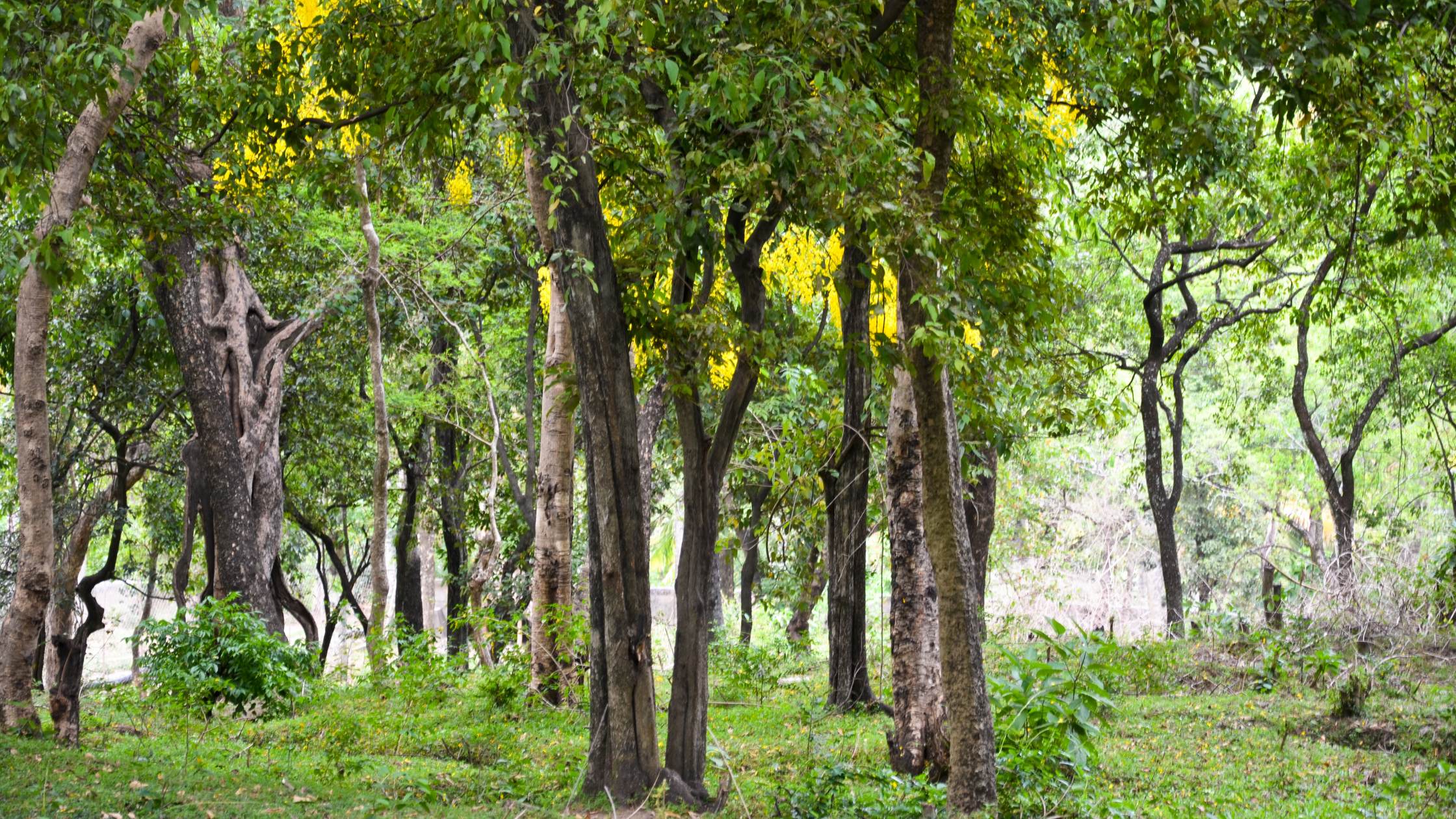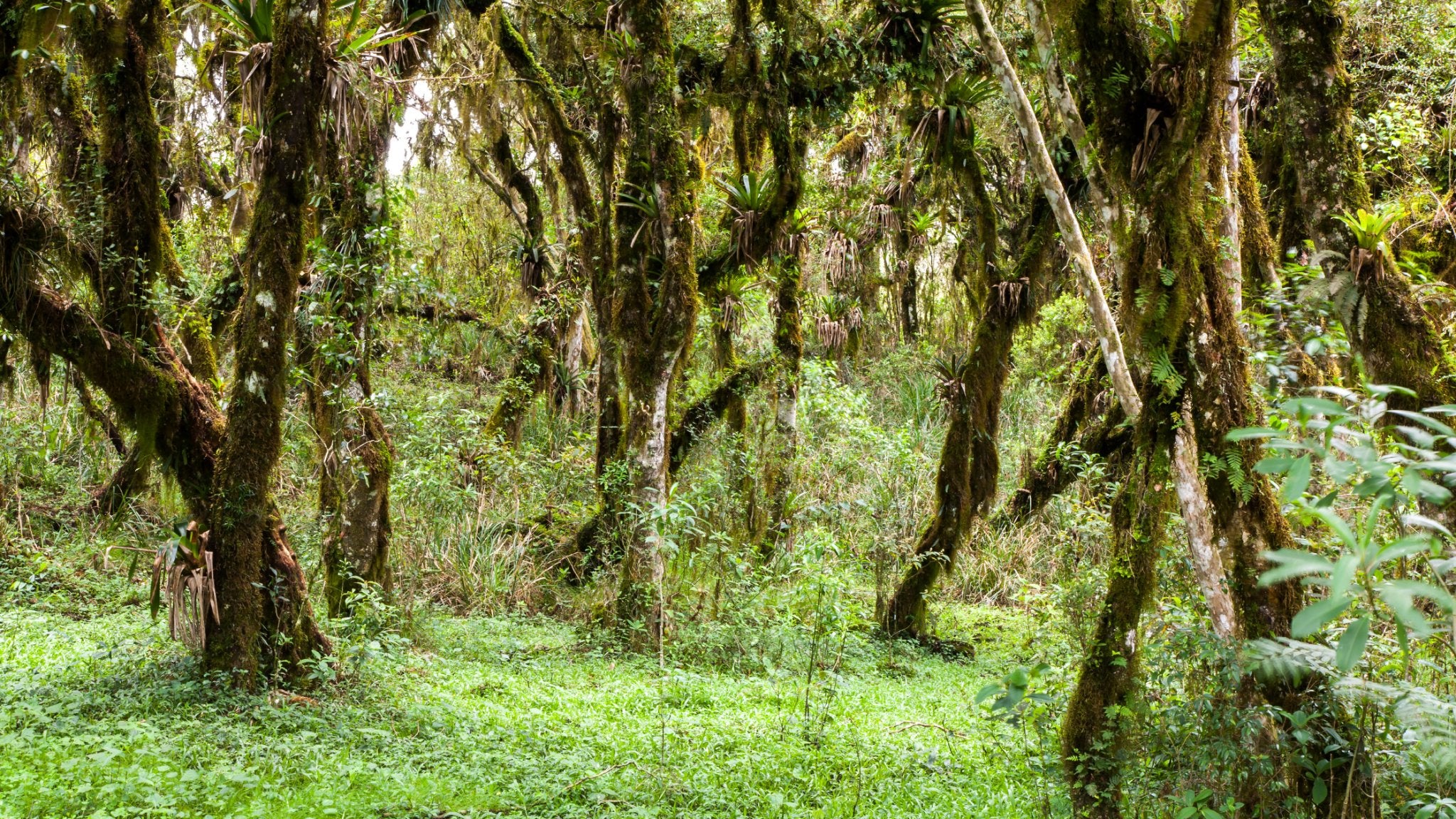When Portuguese explorers, led by Pedro Alvares Cabral, parked their ships off the coast of what is now Brazil, they saw a forest of interesting trees. They called the trees pau brasil.
In the Portuguese language, pau means wood, or tree. Brasil translates to “reddish” or “ember-like.”
This tree, officially named Caesalpinia echinata, is actually a member of the legume family. (Think beans. Like a really big cousin of a bean plant!)
Coastal Forests in Brazil
The pau brasil trees grew in huge numbers along the coast. They’re indigenous, or natural, to the tropical areas and rainforests of the Atlantic coastline.

This flowering tree features pretty red and yellow blossoms and bright green leaves, and can grow up to 49 ft. tall. The older trees shed their bark in patches, revealing the richly colored wood beneath.
The explorers cut down a few of these beautiful trees and sent them back to Portugal, and this sparked a lot of interest back home.
What was all the fuss about pau brasil trees?
Trees and Plants Create Colorful Clothes
No, brightly-colored clothes don't grow on trees. But people can use parts of the plant including fruit, seeds, nuts, bark, and roots to dye wool, linen, cotton, and more.

Before synthetic dye was invented, people made dye from plants and minerals. Making dye from natural materials had been done for centuries. Millenia, even!
There are types of trees which are referred to as dyewood. Oddly enough, most of them are part of the legume family of plants. Proving that beans are important for a whole lot of things!

Old Fustic and Acacia Wood
Old Fustic from India and Africa produces a yellow dye. This tree is also called dyer’s mulberry, as it’s from the mulberry family. The yellowish color pulled from its inner wood dyes fabrics a khaki color. It’s one of the few dyewoods that isn’t from the bean family.
Acacia wood is used for a dye. But it’s also used as a food additive and a medicine! The colored liquid extracted from the wood is called catechu. It’s used in Japanese cooking and as an Ayurvedic medicine.
Logwood
Logwood, found in southern parts of Central America and the West Indies, was discovered in the late 17th century. A dark purple or black dye can be extracted from this tree.

Sandalwood Forest
Sappanwood, Camwood, and Sandalwood
Red dye came from a sappanwood before brazilwood was discovered in the New World. This plant grows naturally in the Asian tropics and in areas of India. It also came from West African camwood or Indian sandalwood.
The trees are cut down and the inner wood is ground into chips. The chips (think mulch) are left to ferment for a few days. This, supposedly, makes the color of the dyes more vibrant. Then, using steam or chemicals, the dye is extracted from the wood.
Back To The Brazilwood Tree
The discovery of brazilwood was a really big thing for imports. Trade for sappanwood was drying up.
The shipment of logs back to Portugal sparked a harvesting race for brazilwood. It led to trade ships from other countries sailing to South America to get in on the trading!
When the traders mentioned the land of red trees, they called it Terra do Brasil, or Land of Brazil. The name stuck.
But natural dyes had costs to acquire and process, so chemists set out to find cheaper alternatives. Synthetic dyes were developed in the early 1900’s, and those dyes eventually took over.
From Dye To Music
Brazilwood is known by many names. Pau Brasilia. Pernambuco. Caesalpinia echinata.
It has one more… the music tree!
The dye trade had been going on in Europe for about 250 years in Portugal and France. They loved the red color it produced.
The part of the tree which is used for dye is the outer part of the wood.

The deeper section, almost at the core of the tree’s trunk, is used for making bows for stringed instruments. That portion was renamed Pernambuco, and it’s still sought today for making the finest violin and cello bows.
Towards the end of the 18th century, bows had changed and adapted to meet the changes in music. The 1720s marked the beginning of the classical period for music.
Music had a lighter tone. It wasn’t as complex as the Baroque compilations which came before it.
This is when the “modern form” for the violin family of instruments was adopted. And with the modern form came a new type of wood to create the bow from.
Brazilwood has some pretty unique characteristics. It can bend in dry heat. It can keep its shape when it’s cool. It has amazing density and suppleness.
In other words, it’s perfect for making bows.
Custom Bows For Professional Musicians

The bows created from Pernambuco are not simple productions. The makers of these bows use their skill, developed over years of practice, to craft a bow which a musician will feel is an extension of his or her arm!
These bows can’t be mechanically made to give them the quality of drawing music from a violin or cello or viola.
In fact, fine bow makers will usually only make one bow at a time. They use their skill to figure out the characteristics of the wood as they go.
There will be soft spots and spots which are denser. Everything is taken into account as they craft the bow. The taper, the weight, and the balance affect how it works with a stringed instrument!
The result is a bow that helps musicians and their instruments create beautiful music, no matter what style they play.
The Bountiful Brazilwood Tree
From colorful clothing to making music to naming a country, the brazilwood tree has provided quite the variety of uses!
You can learn more about Brazil when you explore the culinary dishes in our Brazil box and the online lesson plans in your Explorer Toolkit!







